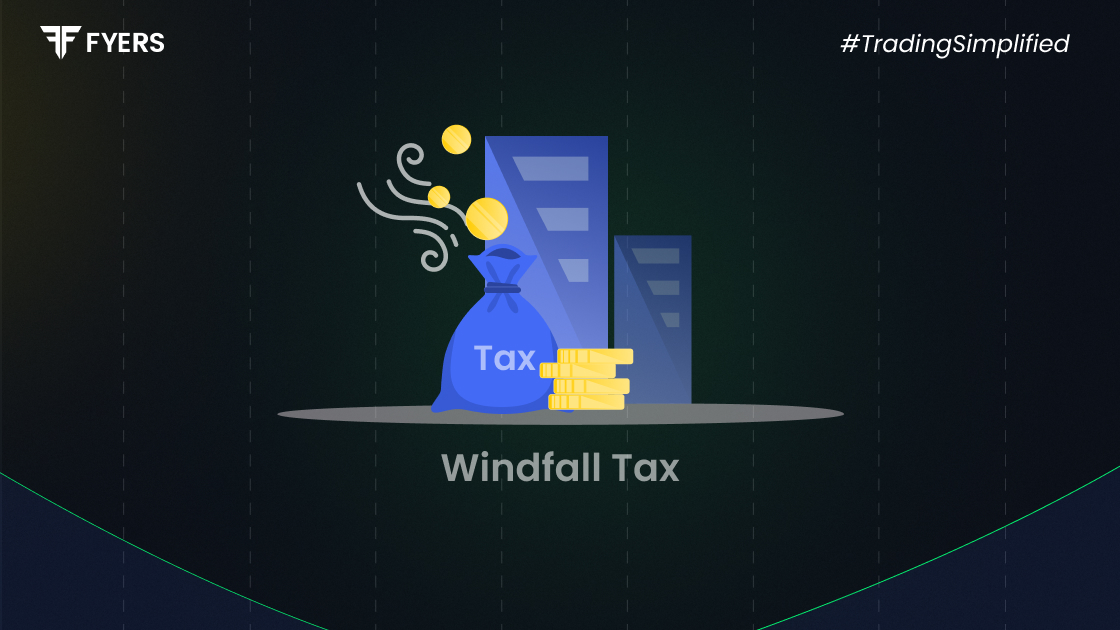

 25 Jul, 2025
25 Jul, 2025
 4 mins read
4 mins read

In times of global crises or economic volatility, certain companies—especially in sectors like energy, mining, or commodities—earn unexpectedly large profits. These are often referred to as windfall gains, and to address this imbalance, governments sometimes introduce a windfall tax.
But what exactly is a windfall tax? How does it work? And why is it such a debated topic in policymaking?
This blog aims to explain the concept of windfall tax, how it is applied, its advantages, and the challenges surrounding it—all in a way that’s easy to understand.
A windfall tax is a one-time tax levied on companies that earn extraordinarily high profits due to external factors, such as geopolitical events, supply disruptions, or sudden price surges. These profits are not the result of the company’s regular business operations or strategic improvements, but rather due to favourable market circumstances beyond their control.
For example, during the 2022–2023 energy crisis following the Russia-Ukraine war, oil and gas companies reported record-breaking earnings. In response, several countries, including India and members of the European Union, imposed windfall taxes on these profits to redistribute income and fund welfare programs.
To prevent excessive profiteering from crises
To redistribute wealth for public benefit
To reduce inflationary pressures driven by high commodity prices
In simple terms, windfall tax ensures that companies benefiting unusually from global disruptions contribute fairly to the economy.
Before understanding the tax, it's important to grasp what windfall gain or windfall income means.
A windfall gain is a sudden and unexpected profit earned by a business or individual due to uncontrollable events.
These gains are typically not consistent or repeatable under normal business circumstances.
For instance, an oil company may earn a windfall gain if global oil prices shoot up due to a war, even though the company’s costs haven’t increased.
Windfall income, on the other hand, may refer to unexpected financial gains in personal finance, such as winning a lottery, receiving a large inheritance, or being awarded a legal settlement.
While personal windfalls may sometimes be taxed differently, windfall gain tax usually targets corporate or industry-wide profits.
A windfall gain tax is usually applied retroactively or on current earnings when the government observes that certain companies or sectors are profiting abnormally.
Here’s how it works:
The government defines a threshold beyond which profits are considered "windfall".
A fixed rate or percentage is applied to these excess profits.
Windfall taxes are often temporary and reviewed regularly based on market stability.
Example:
In July 2022, India introduced a windfall tax on domestic crude oil producers and fuel exporters. The move came after crude oil prices surged globally, allowing Indian producers to generate substantial profits. The tax helped offset rising domestic fuel subsidies and public spending.
The purpose of windfall tax goes beyond simply raising revenue. It serves multiple policy goals:
Promotes equity: Ensures that those who benefit disproportionately during crises share their gains with society.
Reduces fiscal pressure: Governments use windfall tax revenue to fund subsidies or reduce deficits.
Supports consumers: Helps offset the cost of subsidies on essential goods like petrol, diesel, and cooking gas.
Discourages profiteering: Discourages businesses from exploiting market disruptions purely for excess gain.
This tax is especially relevant in sectors with limited competition and where market prices are heavily influenced by global events.
There are several advantages of windfall tax when applied fairly and transparently:
Reduces income inequality
By redistributing extraordinary profits, it supports government schemes for vulnerable populations.
Stabilises inflation
Funds collected can be used to subsidize fuel or essential commodities, reducing the inflationary burden on consumers.
Maintains market fairness
Prevents certain players from gaining an unfair advantage solely due to global shocks.
Generates revenue without increasing standard taxes
It offers an efficient way for the government to raise money in extraordinary times without burdening average taxpayers.
Despite its benefits, the windfall tax comes with certain challenges and criticisms:
Deters investment: Companies argue that sudden, unpredictable taxes discourage long-term investment.
Lack of clear benchmarks: Defining what counts as “excessive” profit can be subjective.
Administrative burden: Constantly revising tax rates based on global conditions adds complexity.
May harm domestic producers: If not calibrated carefully, windfall taxes can reduce the global competitiveness of local businesses.
Furthermore, critics argue that consistent profits due to operational efficiency may get wrongly taxed if there’s no clear differentiation between operational gain and windfall gain.
The windfall tax is a powerful fiscal tool that allows governments to capture unexpected profits from companies benefitting during global upheavals. While it plays a key role in redistributing wealth and maintaining economic balance, its implementation must be careful and transparent to avoid unintended consequences.
As seen in India and other global economies, windfall taxes are increasingly used as temporary, targeted measures to fund public welfare and curb inflation. Going forward, such tools may become more prominent in managing economic shocks and corporate accountability.
Windfall tax is a special tax imposed on companies that earn unexpectedly high profits due to external factors like war or economic crises, rather than business performance.
A windfall gain refers to a sudden, unexpected profit earned due to circumstances beyond the control of the business or individual.
It is applied to ensure fair distribution of extraordinary profits and to generate public revenue during economic volatility.
Windfall tax helps reduce income inequality, stabilize inflation, and fund government welfare programs without increasing the general tax burden on citizens.
Calculate your Net P&L after deducting all the charges like Tax, Brokerage, etc.
Find your required margin.
Calculate the average price you paid for a stock and determine your total cost.
Estimate your investment growth. Calculate potential returns on one-time investments.
Forecast your investment returns. Understand potential growth with regular contributions.